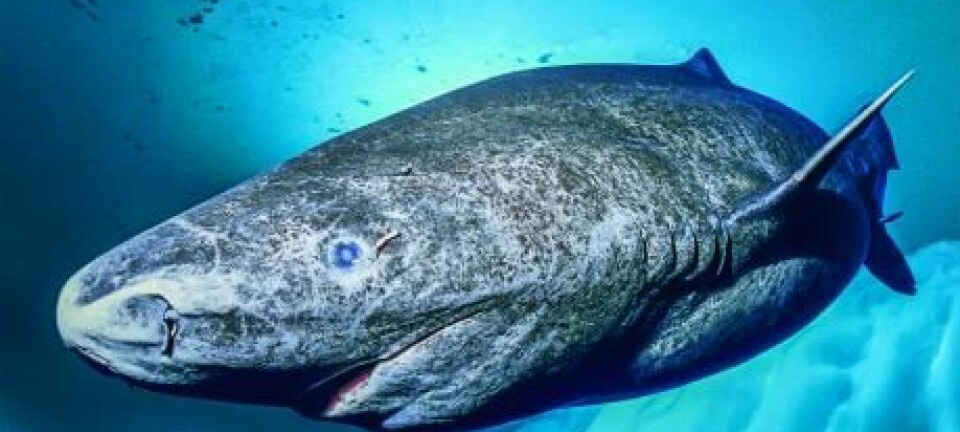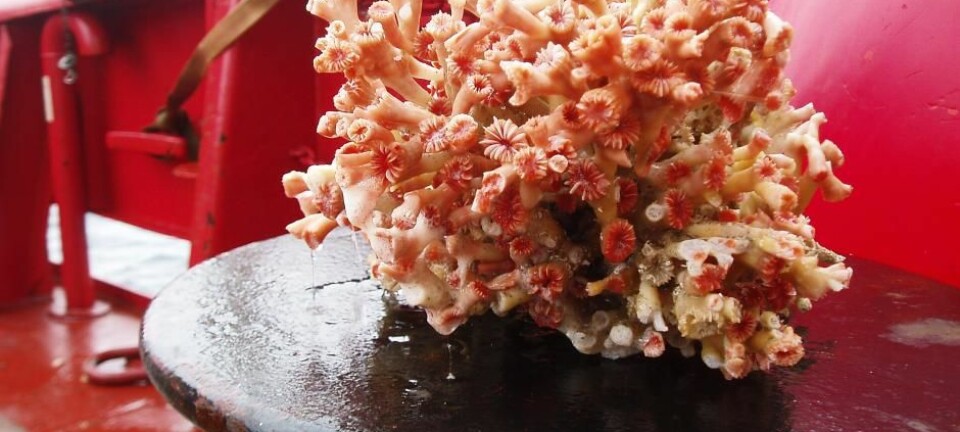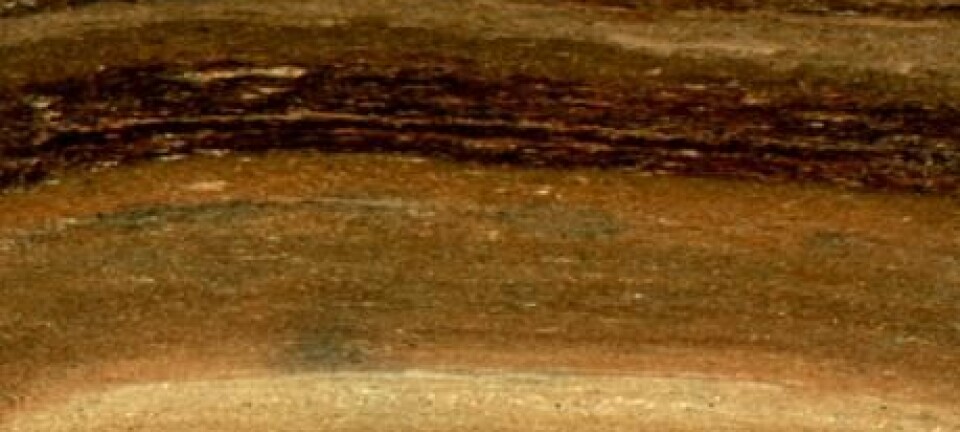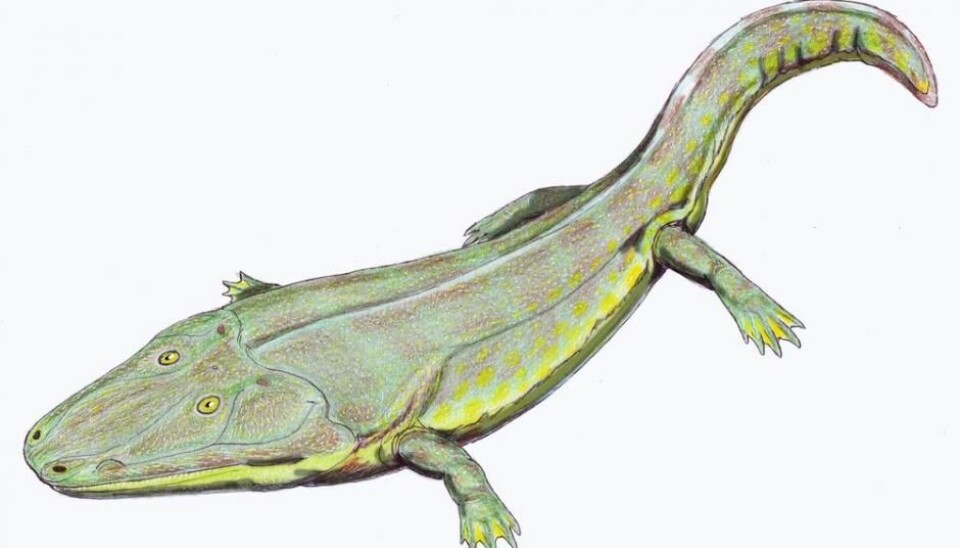
Extinct species of giant amphibians discovered in Greenland
A 210 million years old skull found in East Greenland tells a story of a gigantic salamander-like amphibian sporting a set of large fangs.
210 million years ago, Jameson Land in East Greenland was teeming with life. The mountainous terrain had a subtropical climate where dinosaurs, winged reptiles, and other animals hung out along the long rivers and lakes in the area.
A number of expeditions to the area have revealed numerous fossils that have preserved the lost life in the, now rocky, area.
Most recently, scientists have described a new species of amphibian in a study published in the Journal of Vertebrate Palaeontology.
“It’s very large amphibian that resembles a salamander. It has a large skull, so we can extrapolate that it was approximately 2.5 metres long,” says study co-author Lars Clemmensen, professor in geology at the University of Copenhagen, Denmark.
An amphibian with large fangs
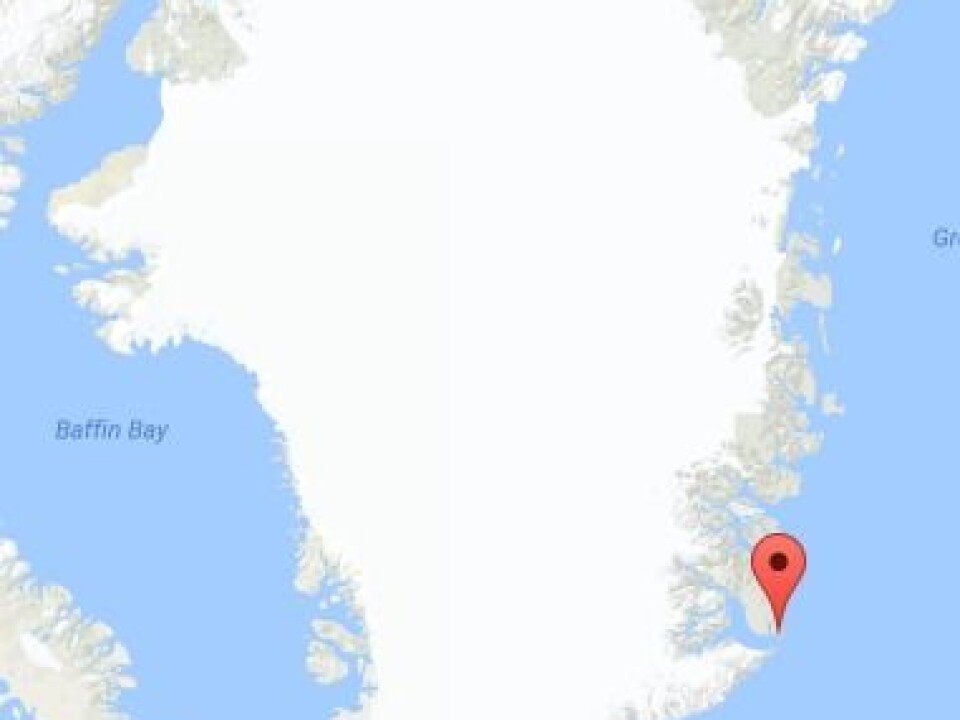
The scientists named the giant amphibian Cyclotosaurus naraserluki. Naraserluki comes from the Greenlandic word “naraserluk,” meaning amphibian or salamander, while Cyclotosaurus is a family of amphibian that lived in the past.
“Amphibian fossils are found in Greenland, Europe, and the southern US, but until now, Cyclotosaurus were only found in Europe,” says lead-author Marco Marzola, a PhD student at the Department of Geosciences and Natural Resource Management at the University of Copenhagen, Denmark, and the Universidade NOVA in Lisbon, Portugal.
The new amphibian has a number of common traits with other Cyclotosaurus, including holes at the front of the skull.
“There would’ve been large fangs here, which were probably used to hunt fish and other aquatic animals,” says Marzola.
A sub-tropical paradise

Palaeontologist Jesper Milan from the GeoMuseum Faxe, Denmark, has no doubts that it is a new species. He was not involved in the new study.
“They’ve measured all of the dimensions of the skull and looked at how it differs from the typical Cyclotosaurus. It also fits with the fact that it’s found in Greenland, so geographically speaking it was a long way away from the others,” says Milàn, who has participated in a number of other excavations in the area around Jameson Land.
The large amphibian trudged around the area during a period known as the late Triassic, between 228 and 200 million years ago.
“Back then the whole Jameson Land area was a floodplain ending in a number of large lakes. The rivers and lakes teemed with life, and on land there were both plant-eating and carnivorous dinosaurs. It was a real sub-tropical paradise,” says Milàn.
Living on a super continent
During the giant amphibian’s time, all of the world’s continents were nestled together in a single continent known as Pangea.
At this time, Greenland was situated much further south—close to the equator, squeezed in between the North American and European continents.
The scientists behind the new study describe the new fossil as an important discovery that can help them understand how species roamed and spread throughout the super continent.
“From the new discovery we can establish that Greenlandic amphibians in the late Triassic were closer relatives of the European amphibians than North American. That’s interesting because Greenland at that time was geographically close to North America. We see a similar pattern among other animal groups such as the crocodile-like phytosaurs, pterosaurs, and dinosaurs,” says Marzola in a press release from the University of Copenhagen.
“We think that this shows that it was climate, rather than the geographic proximity, that played a key role in the distribution of life on Earth at this time,” he says.
Milàn agrees.
“All these discoveries made in Jameson Land show that it’s a totally unique location with an enormous potential for future research,” he says.
-----------------------
Read more in the Danish version of this story on Videnskab.dk
Translated by: Catherine Jex

